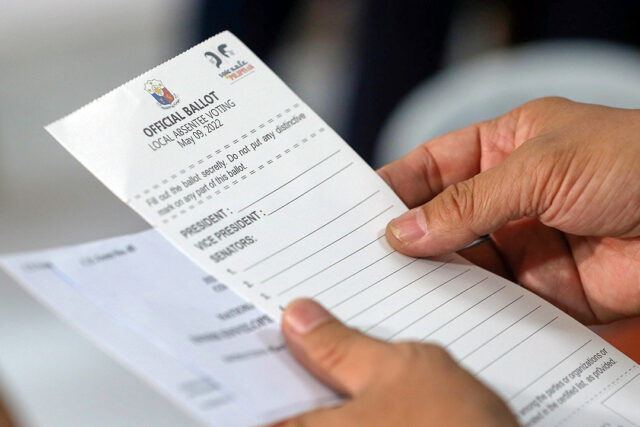PARIS – When French prosecutors took aim at Telegram boss Pavel Durov, they had a trump card to wield – a tough new law with no international equivalent that criminalizes tech titans whose platforms allow illegal products or activities.
The so-called LOPMI law, enacted in January 2023, has placed France at the forefront of a group of nations taking a sterner stance on crime-ridden websites. But the law is so recent that prosecutors have yet to secure a conviction.
With the law still untested in court, France’s pioneering push to prosecute figures like Mr. Durov could backfire if its judges balk at penalizing tech bosses for alleged criminality on their platforms.
A French judge placed Mr. Durov under formal investigation last month, charging him with various crimes, including the 2023 offence: “Complicity in the administration of an online platform to allow an illicit transaction, in an organized gang,” which carries a maximum 10-year sentence and a 500,000 euro ($556,300) fine.
Being under formal investigation does not imply guilt or necessarily lead to trial, but indicates judges think there’s enough evidence to proceed with the probe. Investigations can last years before being sent to trial or dropped.
Mr. Durov, out on bail, denies Telegram was an “anarchic paradise.” Telegram has said it “abides by EU laws,” and that it’s “absurd to claim that a platform or its owner are responsible for abuse of that platform.”
In a radio interview last week, Paris Prosecutor Laure Beccuau hailed the 2023 law as a powerful tool for battling organized crime groups who are increasingly operating online.
The law appears to be unique. Eight lawyers and academics told Reuters they were unaware of any other country with a similar statute.
“There is no crime in U.S. law directly analogous to that and none that I’m aware of in the Western world,” said Adam Hickey, a former U.S. deputy assistant attorney general who established the Justice Department’s (DOJ) national security cyber program.
Mr. Hickey, now at U.S. law firm Mayer Brown, said U.S. prosecutors could charge a tech boss as a “co-conspirator or an aider and abettor of the crimes committed by users” but only if there was evidence the “operator intends that its users engage in, and himself facilitates, criminal activities.”
He cited the 2015 conviction of Ross Ulbricht, whose Silk Road website hosted drug sales. U.S. prosecutors argued Ulbricht “deliberately operated Silk Road as an online criminal marketplace … outside the reach of law enforcement,” according to the DOJ. Ulbricht got a life sentence.
Timothy Howard, a former U.S. federal prosecutor who put Ulbricht behind bars, was “sceptical” Durov could be convicted in the United States without proof he knew about the crimes on Telegram, and actively facilitated them – especially given Telegram’s vast, mainly law-abiding user base.
“Coming from my experience of the U.S. legal system,” he said, the French law appears “an aggressive theory.”
Michel Séjean, a French professor of cyber law, said the toughened legislation in France came after authorities grew exasperated with companies like Telegram.
“It’s not a nuclear weapon,” he said. “It’s a weapon to prevent you from being impotent when faced with platforms that don’t cooperate.”
TOUGHER LAWS
The 2023 law traces its origins to a 2020 French interior ministry white paper, which called for major investment in technology to tackle growing cyber threats.
It was followed by a similar law in November 2023, which included a measure for the real-time geolocation of people suspected of serious crimes by remotely activating their devices. A proposal to turn on their devices’ cameras and mouthpieces so that investigators could watch or listen in was shot down by France’s Constitutional Council.
These new laws have given France some of the world’s toughest tools for tackling cybercrime, with the proof being the arrest of Mr. Durov on French soil, said Sadry Porlon, a French lawyer specialized in communication technology law.
Tom Holt, a cybercrime professor at Michigan State University, said LOPMI “is a potentially powerful and effective tool if used properly,” particularly in probes into child sexual abuse images, credit card trafficking and distributed denial of service attacks, which target businesses or governments.
Armed with fresh legislative powers, the ambitious J3 cybercrime unit at the Paris prosecutor’s office, which is overseeing the Durov probe, is now involved in some of France’s most high-profile cases.
In June, the J3 unit shut down Coco, an anonymized chat forum cited in over 23,000 legal proceedings since 2021 for crimes including prostitution, rape and homicide.
Coco played a central role in a current trial that has shocked France.
Dominique Pelicot, 71, is accused of recruiting dozens of men on Coco to rape his wife, whom he had knocked out with drugs. Mr. Pelicot, who is expected to testify this week, has admitted his guilt, while 50 other men are on trial for rape.
Coco’s owner, Isaac Steidel, is suspected of a similar crime as Mr. Durov: “Provision of an online platform to allow an illicit transaction by an organized gang.”
Mr. Steidel’s lawyer, Julien Zanatta, declined to comment. – Reuters











